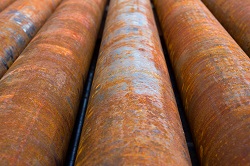Plants ‘talk’ to each other through chemicals to warn of hungry herbivores
Plants can warn each other of predators in a similar way to people, new research shows. Instead of spoken language, plants emit volatile compounds into the air that can be understood by a select group of fellow plants that possess and emit similar compounds. Research fellow Patrick Grof-Tisza, from the University of Eastern Finland(opens in new window) (UEF) conducted field and laboratory experiments with Artemisia tridentata, commonly known as sagebrush(opens in new window). Samples were grouped into chemotypes according to the chemical compounds they contained and emitted. “Our results clearly demonstrate chemotype-dependent communication,” says Grof-Tisza. “This may be analogous to language dialects in human speech. Dialects that are similar may allow two individuals of different dialects to communicate, while other dialects are too differentiated to enable effective communication.” During the CVVOC project, with the support of the Marie Skłodowska-Curie Actions(opens in new window) programme, Grof-Tisza carried out fieldwork in the Sierra Nevada Mountains in eastern California, near the University of California Davis(opens in new window) Sagehen field station. Richard Karban, professor at UC Davis, collaborated in the research. Grof-Tisza also conducted a parallel study in growth chambers at the UEF laboratory supervised by James Blande, head of the Environmental Ecology Research Group.
Buried treasure
The mountain setting for the fieldwork was beautiful but challenging due to unpredictable weather. “When I flew from Finland to California for my second field season, I found our sagebrush plants under a metre of snow. This forced my undergraduate assistant and I to walk around a mountain in knee-deep snow to locate new plants!” adds Grof-Tisza. That painstaking work has enriched ecologists’ understanding of the way plants communicate and defend themselves. Experiments revealed plants exposed to alarm signals suffered less damage from herbivores by the end of the growing season than control plants that were only exposed to air. In a follow-up experiment, a beetle chose to consume control leaves more often than leaves exposed to alarm signals from a plant with a similar chemotype. “This beetle can completely defoliate an entire plant so being able to deter it is highly advantageous,” explains Grof-Tisza. Karban and his colleague Louie Yang have subsequently demonstrated beetles are more likely to move away from induced plants – those that have increased their defensive response after receiving an alarm signal from another plant. They published their work in an article(opens in new window) in the Journal of Animal Ecology. The CVVOC team developed a new method to categorise plants into chemotypes as well as new bioassays, enzymatic assays and a gene expression assay to assess plant communication in sagebrush. “These tools will expedite future studies and enhance the reliability of results,” notes Grof-Tisza. He shared details in an article titled ‘Assessing plant-to-plant communication and induced resistance in sagebrush using the sagebrush specialist Trirhabda pilosa’(opens in new window) in the journal Arthropod-Plant Interactions. COVID-19 restrictions interrupted his work, but Grof-Tisza is happy with his progress nevertheless. His research sheds light on the ecological importance of chemotypic diversity and the processes that maintain it. “Chemotype-dependent communication provides plants with a competitive advantage.”







